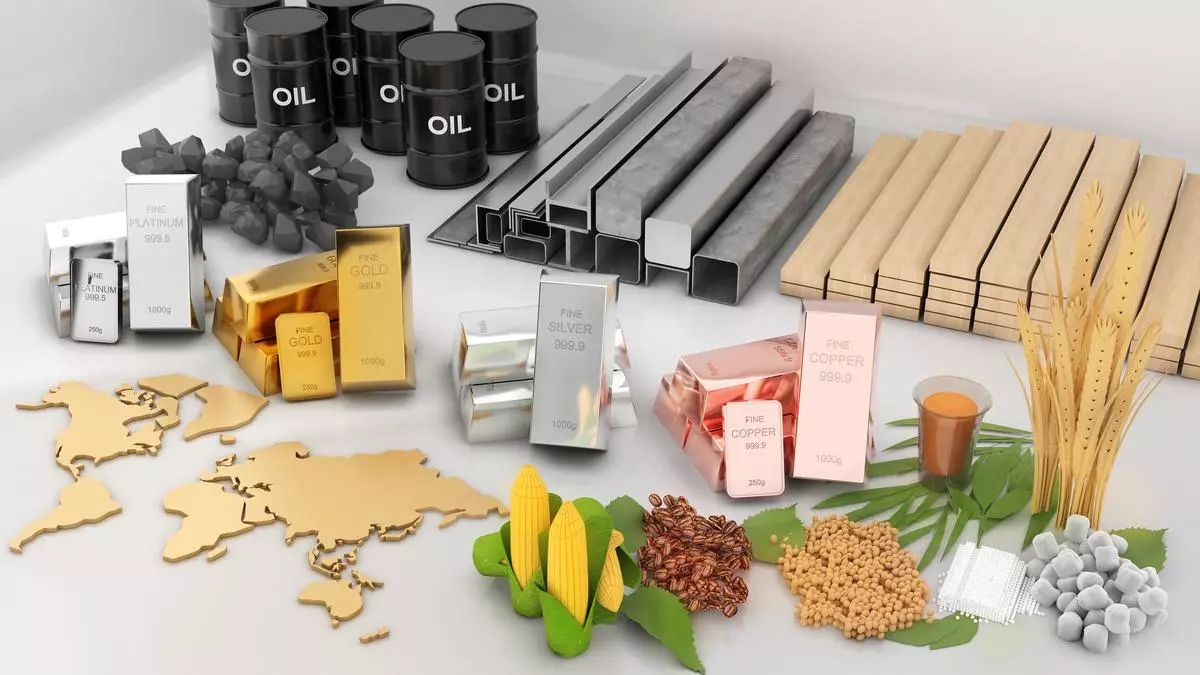Commodities prices likely to drop in 2024, 2025 but will be above pre-pandemic level, says World Bank report
Prices of commodities will likely decline marginally in 2024 and 2025 but they will remain 38 per cent above pre-pandemic levels, the World Bank has said in its latest Commodity Markets Outlook.
In all, disinflationary tailwinds from moderating commodity prices appear essentially over, it said.
Unlike prices for most other commodities, crude oil prices are set to increase by 2 per cent in 2024. Gold and copper prices are also set to rise this year, by 8 per cent and 5 per cent, respectively.
“Heightened tensions in the Middle East have been exerting upward pressure on prices for key commodities, notably oil and gold. Copper prices have also reached a two-year peak, reflecting supply concerns and signs of firmer global industrial production,” the outlook said.
Despite subdued global growth
The World Bank said high commodity prices in comparison with pre-pandemic levels persisted despite subdued global GDP growth due to several forces at play.
Geopolitical tensions were pushing up prices, while investments related to the clean-energy transition bolstered demand for metals. China’s rising industrial and infrastructure investment is partly offsetting weakness in its property sector, the outlook said.
There are upside risks to the World Bank outlook mainly from the current problems in the Middle East. “A conflict-driven rise in commodity prices could stoke stubbornly elevated global inflation, further delaying global monetary easing. Food insecurity, which worsened markedly last year reflecting armed conflicts and elevated food prices, could also rise further,” it said.
Signs of resilience in global economic activity have also supported prices of other commodities—including copper. These price increases followed notable fluctuations in crude oil prices and, more generally, a plateauing of many commodity prices in the first quarter of the year, the outlook said.
Energy index to drop
Assuming that there is no further conflict escalation globally, crude oil prices are projected to increase this year, with the Brent crude price averaging $84 a barrel (bbl) in 2024, up from $83/bbl last year, reflecting the recent ratcheting up of geopolitical tensions and a tight supply-demand balance.
However, the energy price index will drop 3 per cent in 2024 and ease a further 4 per cent in 2025 (year-on-year). This trajectory is predicated on significant declines in coal and natural gas prices this year.
The outlook said agricultural prices are expected to soften this year and next, reflecting increased supplies and moderating El Nino conditions, primarily affecting food crops. Accordingly, food commodity prices are set to decline by 6 per cent in 2024 and 4 per cent in 2025, while a spike in beverage prices this year — reflecting supply constraints on robusta coffee and, even more so, cocoa — is projected to partially retreat in 2025.
Prices of agricultural raw materials, in contrast, are anticipated to remain stable. Fertilizer prices will likely continue a sharp descent, driven by lower costs for inputs such as natural gas, it said.
Gold may plateau
Base metal prices are forecast to edge up in 2024 and 2025 and remain well above 2015-19 levels, reflecting a pick-up in global industrial activity and growing production of clean energy technologies. In contrast, a further decline is projected in the price of iron ore, which is important for property starts, but less relevant to the green transition.
Gold prices, which dominate the precious metals index, are assumed to plateau at their recent record highs for the rest of this year. Such haven demand looks set to strengthen in 2024. Prices have also been supported by strong demand, partly reflecting the reserves management strategies of several central banks.
Gold prices are set to dip slightly next year but remain historically high, averaging 62 per cent above 2015-19 levels, it said.
Given elevated uncertainty following the recent increase in regional tensions, a range of adverse outcomes remains possible, especially with regard to crude oil prices.
Upside risks
In addition to the potential for a conflict-driven supply shock, prices for crude oil and natural gas could turn out higher if US energy production falls short of the expansion assumed in the baseline, the World Bank said.
Unexpected weather patterns could result in weather-related disruptions to commodity markets, leading to higher prices. Growing seasons could be compromised, leading to price spikes for agricultural commodities, the outlook said.
On the other hand, higher OPEC production and supply and weak global growth could drag commodities prices further..
